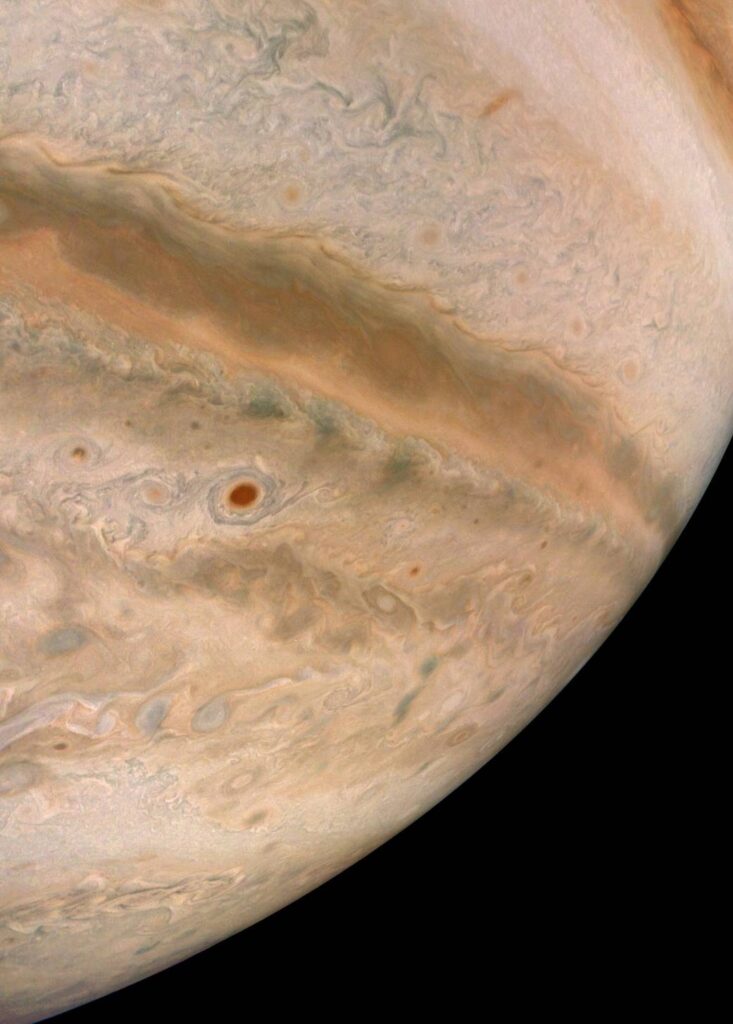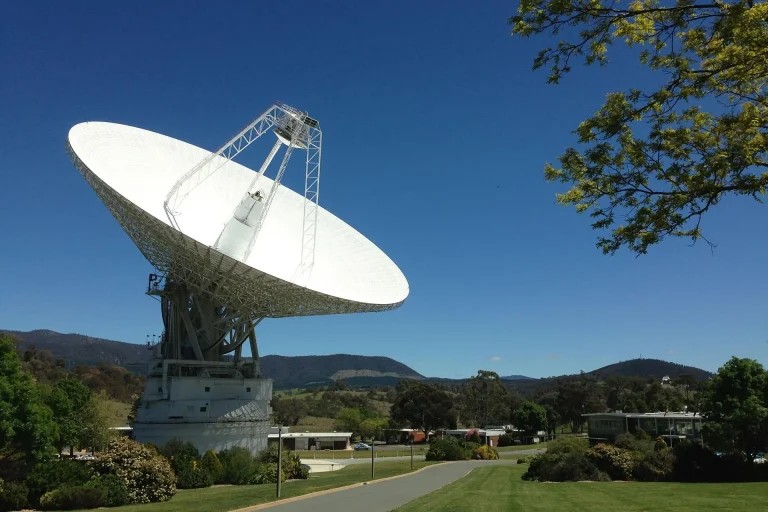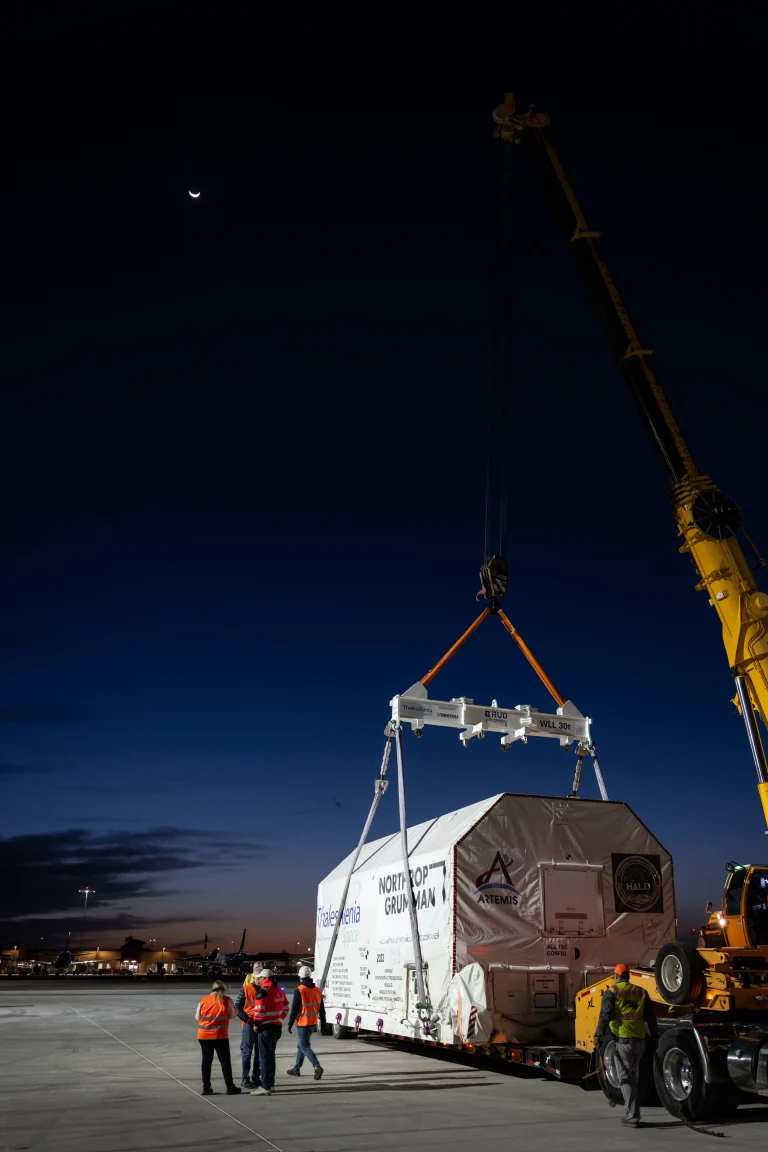During its 36th low pass over Jupiter, NASA’s Juno spacecraft captured this view of striking cloud bands and swirls in the giant planet’s mid-southern latitudes. The dark, circular vortex near the center of the image is a cyclone that spans roughly 250 miles (about 400 kilometers). The color at its center is likely to be the result of descending winds that cleared out upper-level clouds, revealing darker material below.
在第36次低空掠过木星时,NASA的朱诺号航天器捕捉到了这一巨行星中南纬度地区引人注目的云带和漩涡的景色。靠近图像中心的黑暗的圆形漩涡是一个气旋,其跨度大约为250英里(约400公里)。其中心的颜色可能是下降的风清除了上层云层的结果,露出了下面较暗的物质。
Citizen scientist Brian Swift used a raw JunoCam image digitally projected onto a sphere to create this view. It has been rotated so that north is up. The original image was taken on Sept. 2, 2021, at 4:09 p.m. PDT (7:09 p.m. EDT). At the time, the spacecraft was about 16,800 miles (about 27,000 kilometers) above Jupiter’s cloud tops, at a latitude of about 31 degrees south.
公民科学家布莱恩·斯威夫特(Brian Swift)使用一个原始的JunoCam图像,通过数字方式投射到一个球体上,创造了这个视图。它已经被旋转,所以北面朝上。原始图像拍摄于2021年9月2日,太平洋时间下午4点09分(美国东部时间下午7点09分)。当时,航天器在木星云顶上方约16,800英里(约27,000公里)处,南纬约31度。
JunoCam’s raw images are available for the public to peruse and process into image products. More information about NASA citizen science can be found on our NASA Solve page and our NASA Science site.
JunoCam的原始图像可供公众浏览并处理成图像产品。关于NASA公民科学的更多信息,可以在我们的NASA解答页面和NASA科学网站上找到。
Image data: NASA/JPL-Caltech/SwRI/MSSS
Image processing by Brian Swift © CC BY
图片数据:NASA/JPL-Caltech/SwRI/MSSS
图片处理:Brian Swift © CC BY







